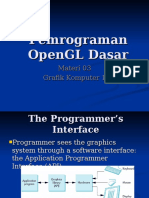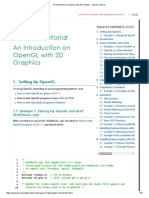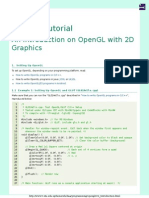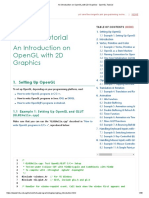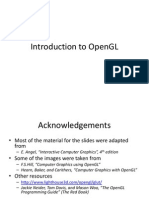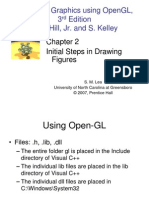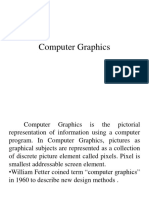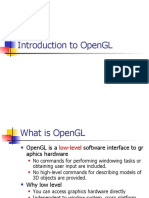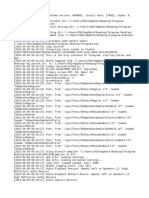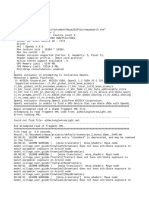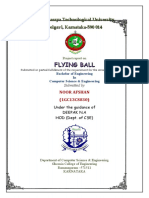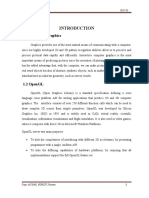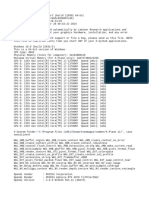0% found this document useful (0 votes)
15 views26 pagesIntroduction To openGL
OpenGL is a low-level graphics rendering API that enables the generation of high-quality color images from geometric and image primitives, ensuring maximal portability across different display devices, window systems, and operating systems. It primarily functions by rendering geometric and raster primitives, and while it does not manage window functions, it can be used with additional libraries like GLUT for window management and event handling. The document provides code examples and explains the structure and usage of OpenGL and GLUT for creating graphics applications.
Uploaded by
Dani AberaCopyright
© © All Rights Reserved
We take content rights seriously. If you suspect this is your content, claim it here.
Available Formats
Download as PDF, TXT or read online on Scribd
0% found this document useful (0 votes)
15 views26 pagesIntroduction To openGL
OpenGL is a low-level graphics rendering API that enables the generation of high-quality color images from geometric and image primitives, ensuring maximal portability across different display devices, window systems, and operating systems. It primarily functions by rendering geometric and raster primitives, and while it does not manage window functions, it can be used with additional libraries like GLUT for window management and event handling. The document provides code examples and explains the structure and usage of OpenGL and GLUT for creating graphics applications.
Uploaded by
Dani AberaCopyright
© © All Rights Reserved
We take content rights seriously. If you suspect this is your content, claim it here.
Available Formats
Download as PDF, TXT or read online on Scribd
/ 26








